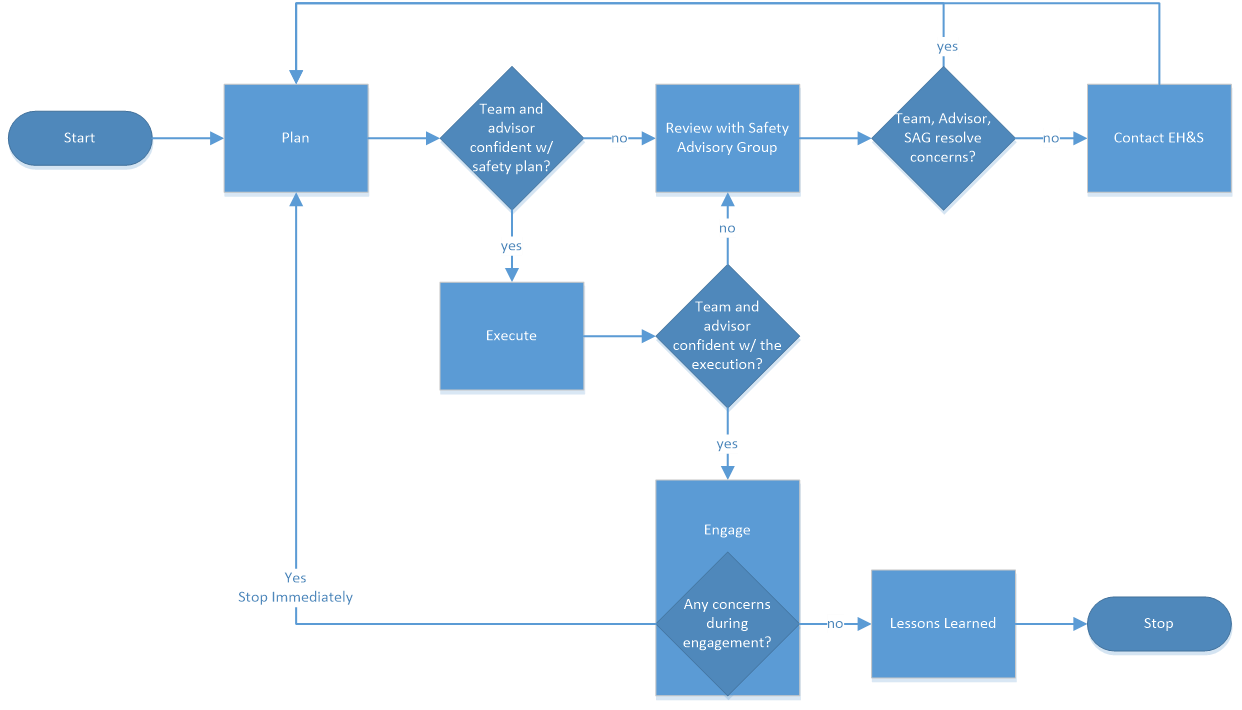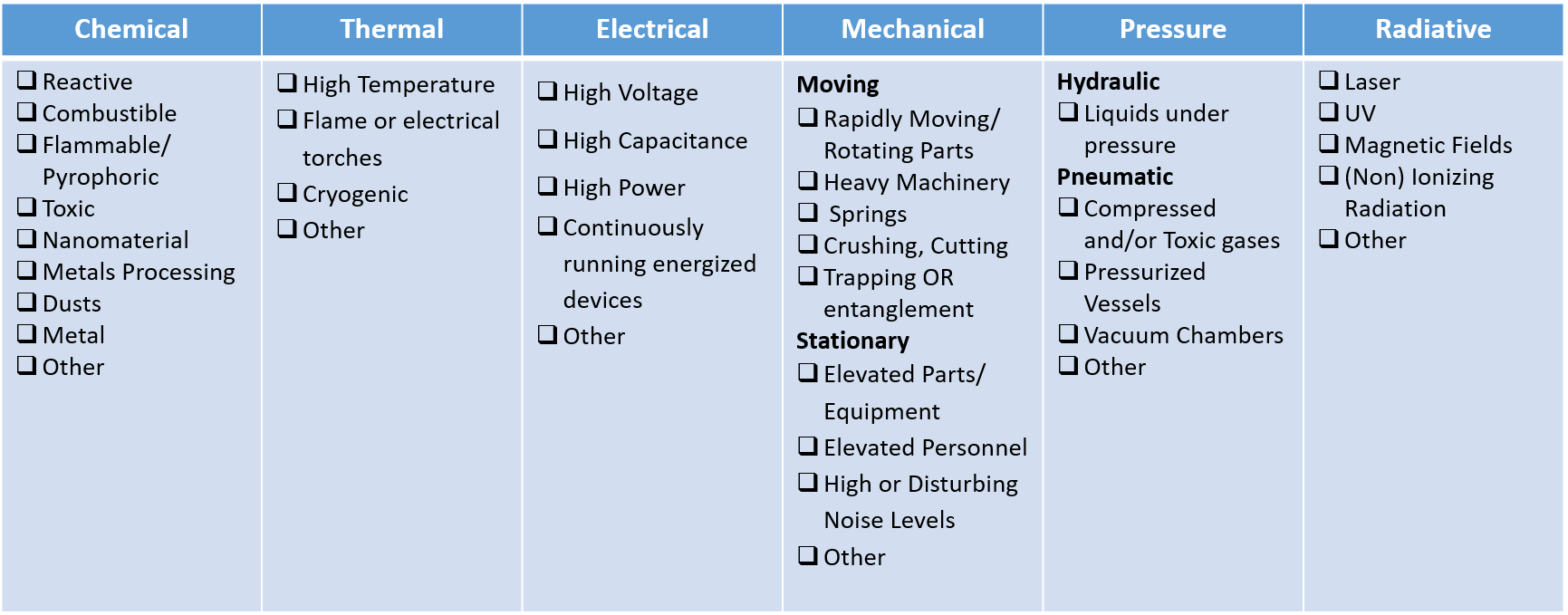While working on your projects, you will get your hands dirty by taking on various manufacturing processes to bring your design to life. You will then also want to test your design. The prototyping and testing activity is often an exciting and a rewarding part of the project experience, however, an injury or worse can quickly dispel the enthusiasm for your team and for the rest of the SDP community. Safety is paramount for your project. Safety should not afterthought but rather continuously observed, designed, and planned alongside of your project’s lifecycle.
Every SDP team MUST designate a Team Safety Lead. The Safety Lead must implement the framework described in the next section. Documents must be submitted, and continuous monitoring and reporting on safety-related issues must continue for the duration of the project. Some of the Safety Leads will be asked to sit on the Safety Advisory Group. The Safety Advisory Group is responsible for evaluating safety issues within the SDP program and assisting teams with recommending Safety Modules and other available resources.
Safety must be built into every phase of each project and not simply “looked at” after the design and testing plan is decided upon.
PEEL Safety Framework
The PEEL Safety Framework will help you prepare for your design and manufacturing processes so to avoid accidents, injuries, or death.
- Identify manufacturing processes and methods
- Identify materials to be used
- Plan for safe manufacturing and material handling
- Plan for assembly
- Plan for testing
- Plan for operation
The project safety plan document complements the PEEL safety framework and guides you through the Plan for Safety (Sections I-IV) and Execute the Plan (Sections V-VI) processes. All teams will need to complete this document and review it with the Safety Advisory Group. Consult the events calendar for due dates.
The following flow chart shows the PEEL Evaluation Process.

As you’re working through the planning process, use the the table below to help you discover potential safety concerns within you projects. Ask yourselves the following questions:
Chemicals/Material:
- Am I familiar with the inherent hazards of the material(s) involved in the process?
- What are the limits of the reaction?
Equipment:
- Am I familiar with the safety hazards/ features/controls of machines/instruments/devices in the experiment?
- Have you reviewed operating ranges/limits of equipment? such as input voltages, input pressures etc.
- Are there unexpected startup, failure of safety controls?
Procedural Hazards
- Have interactions between different materials and/or equipment been examined?
- What can go wrong (potential pathways) with the reaction, the equipment, or in the environment?
- What conditions could arise that would enable something to go wrong?

